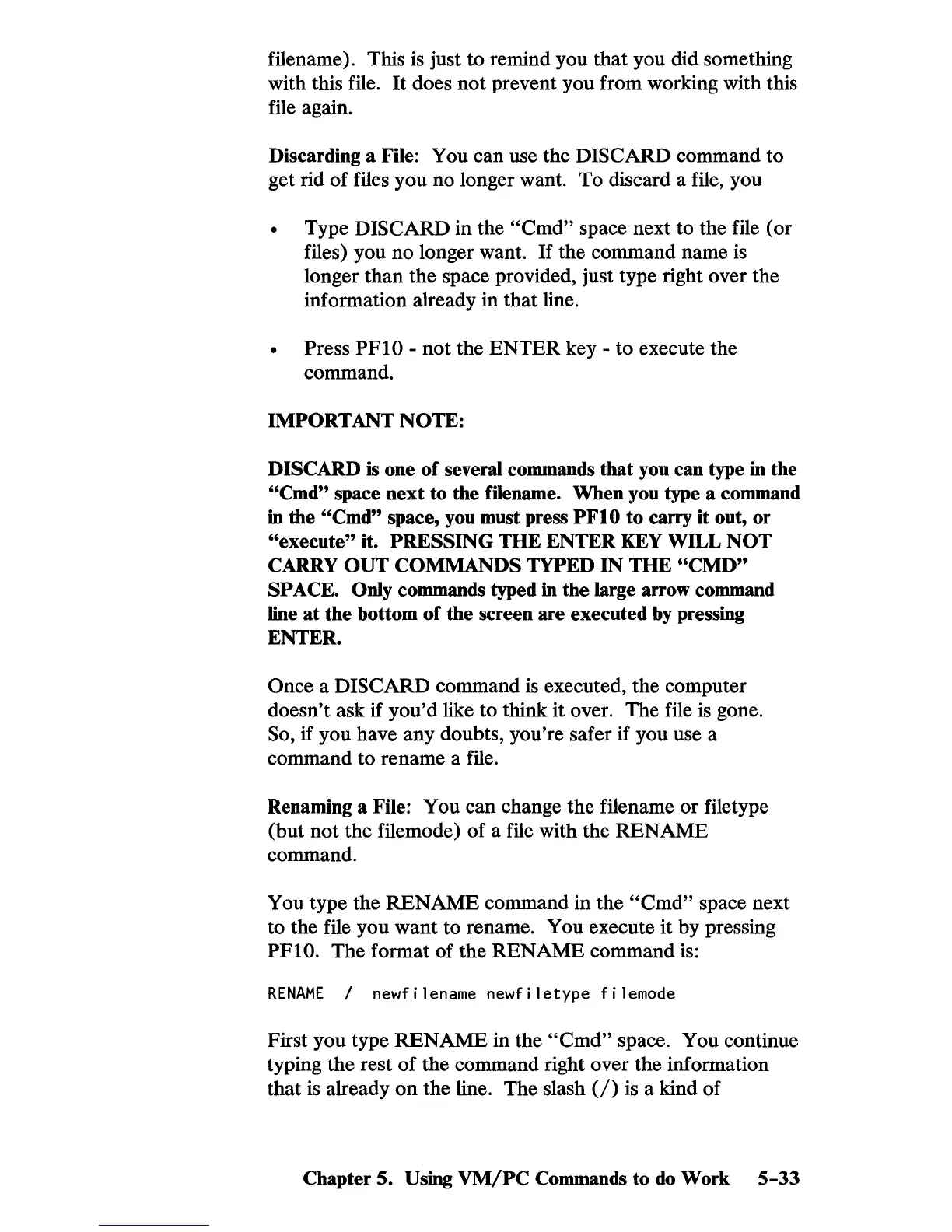filename). This is just
to
remind you that you did something
with this file.
It
does not prevent you from working with this
file again.
Discarding a File: You can use the
DISCARD command to
get rid
of
files you no longer want. To discard a file, you
Type
DISCARD in the
"Cmd"
space next to the file (or
files) you no longer want.
If
the command name
is
longer than the space provided, just type right over the
information already in that line.
• Press
PF
1 0 - not the
ENTER
key - to execute the
command.
IMPORTANT NOTE:
DISCARD is one of several commands that you can type
in the
"Cmd" space next to the filename. When you type a command
in the "Cmd" space, you must press PFIO to carry it out, or
"execute" it.
PRESSING THE ENTER KEY WILL
NOT
CARRY
OUT
COMMANDS TYPED IN
THE
"CMD"
SPACE. Only commands typed
in
the large arrow command
line
at
the bottom of the screen are executed
by
pressing
ENTER.
Once a DISCARD command
is
executed, the computer
doesn't ask if you'd like to think it over. The file
is
gone.
So, if you have any doubts, you're safer if you use a
command to rename a file.
Renaming a File: You can change the filename or file type
(but not the filemode)
of
a file with the RENAME
command.
You type the
RENAME
command in the
"Cmd"
space next
to the file you want to rename. You execute it by pressing
PFIO. The format of the RENAME command
is:
RENAME
/
newfilename
newfiletype
filemode
First you type
RENAME
in the
"Cmd"
space. You continue
typing the rest
of
the command right over the information
that
is
already
on
the line. The slash
(/)
is
a kind of
Chapter 5.
Using
VM/PC
Commands to
do
Work
5-33

